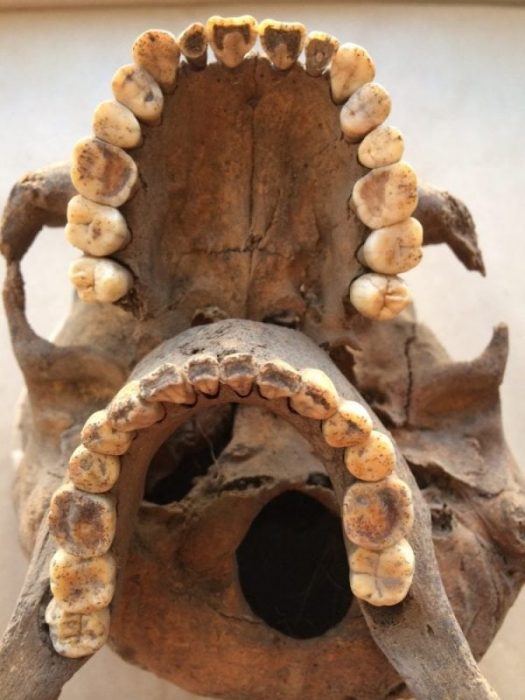
The central Andean highlands of Peru and Bolivia is one of only a few regions of the world where native plants and animals were independently domesticated in the ancient past. Evidence for dozens of domesticated species, including tubers, quinoa, llamas, and alpacas, began to emerge in the region some 5,000 years ago.
The process of domestication eventually led to permanent and increasingly larger settlements, the accumulation of wealth and greater socio-political complexity, and some of the earliest state-level societies in the western hemisphere. However, little is known about the foraging groups that initially colonized, permanently occupied, and eked-out a living across this extreme, high-elevation environment.
Research conducted in 2013 at the archaeological site of Soro Mik’aya Patjxa (SMP) along the eastern edge of the Lake Titicaca Basin (LTB), uncovered sixteen human burials dating between about 8,000 and 6,500 years ago.

Aerial image of the excavations at Soro Mik’aya Patjxa site (photo credit: Randy Haas)
The SMP remains were important discoveries because they constitute the earliest securely dated burial assemblage in the basin, and the only one representing pre-agricultural foragers. These discoveries led to a collaborative research project to document the skeletal biology of this unique sample and better define subsistence behaviors among foragers prior to incipient sedentism and domestication in the region.
Tooth Wear An Indication Of Highland Forager Diets
Teeth often contain a great deal of information about diet and subsistence practices for past populations and eleven of the sixteen SMP individuals had preserved teeth to examine (251 teeth in total). Special attention was paid to the presence of dental disease and tooth wear since the composition of prehistoric diets can directly contribute to the prevalence of tooth decay and the rate and type of wear.
For example, higher rates of caries (tooth decay, or cavities) and tooth loss are far more common among agricultural populations that consumed heavily processed, carbohydrate-rich diets than among foragers that consumed minimally processed and more varied diets. Similarly, tooth wear is generally uneven across the dentition among agriculturalists compared to heavy, but flat wear across the dentition of foragers.
Tooth wear among the SMP foragers fit nicely within this generalized pattern. Only one individual had a cavity—and only a small lesion on one tooth. Tooth wear was also heavy across the dentition and tended to be flat, especially among the posterior teeth. These findings were all consistent with expectations for terrestrial foraging and a diverse diet.

Tooth wear associated with tuber processing (photo credit: James Watson)
In addition to the expected wear on the teeth however, five of the individuals exhibited an unexpected form of specialized wear on the upper front teeth—referred to as lingual surface attrition of the maxillary anterior teeth (or LSAMAT). LSAMAT has been associated with using the incisors for peeling tubers in several archaeological and ethnographic (extant) examples that range from Brazil to East Africa, and East Asia. This specialized wear is an important signal of dietary choices and plant processing in an area that experienced domestication of many tuber species.
Archaeologists have long suspected that a certain level of intimacy with wild plant and animal species was necessary to contribute to incipient domestication, but the specialized tooth wear observed at SMP demonstrates that, as an important component of the highland forager diet, the exploitation of tubers clearly predates plant and animal domestication in the south-central Andes.
This study, Dental evidence for wild tuber processing among Titicaca Basin foragers 7000 ybp, was recently published in the American Journal of Physical Anthropology.









